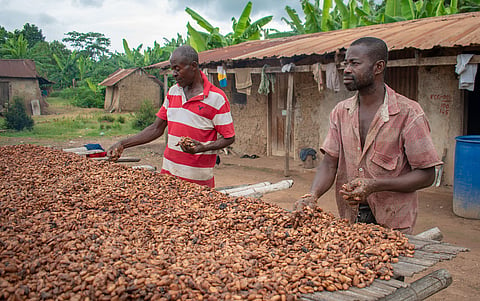

Developing nations are at risk of missing out on the fruits of a new green economy, unless they make economic resilience and green industrialisation central to their climate agenda, according to a set of new discussion papers released by Centre for Science and Environment (CSE) even as the 30th Conference of the Parties (COP30) to the United Nations Framework Convention on Climate Change began on November 10, 2025, in Brazil’s Belem.
Towards a new green world — as the CSE paper series is called — was released on the eve of COP30. It calls for centering economic resilience, value addition and green industrialisation in the climate agenda for developing countries.
Releasing the series, CSE director general Sunita Narain said: “Inclusive and affordable development is critical for economic resilience and will help combat climate change.”
“Countries need an economic stake in the green transition, which requires domestic manufacturing and job creation. For this, we must also reset global trade and finance rules for localisation and value addition. There is an opportunity to rethink these rules so that distributed local-led production systems can become the basis of green industrialisation,” Narain added.
The series presents a Southern perspective on how the Global South can participate and stay afloat in the new, green economy while focusing on three strategic fronts of the green transition — agriculture and forest commodities, critical minerals, and clean technology and manufacturing.
Across commodities, minerals and manufacturing, developing countries face a common dilemma: they supply the world’s resources but capture too little of the value. From raw cocoa and copper to lithium and solar cells, the green transition is repeating old patterns of extraction and dependence.
“The global green transition risks reproducing old inequities under a new climate-friendly banner, unless the Global South is empowered to capture greater value, diversify its economies, and shape the governance of emerging green industries,” a CSE statement quoted Avantika Goswami, programme manager, climate change at the Delhi-based think tank.
“We need to reinvent the climate agenda for the Global South. Calling for decarbonisation without economic resilience is no longer viable,” she added.
Developing countries are trapped in a low-value export cycle — they sell raw agricultural and forest commodities, and end up with almost nothing of the value, says the first paper in the series.
For instance, Ivory Coast and Ghana produce over 50 per cent of the world’s cocoa beans; but, they account for a mere 6.2 per cent of the total export revenue from value-added products like chocolate and cocoa powder.
In contrast, manufacturers and retailers located in Global North countries capture almost 80-90 per cent of the total profit margin of a chocolate bar. The paper argues that “a shift from raw exports to processing and diversification is critical”.
The Global South holds most of the world’s reserves of critical minerals crucial for energy transition; but it captures little of the value generated from refining and manufacturing.
Goswami said: “These countries remain exposed to commodity price volatility, balance-of-payments instability, and geopolitical risk.”
The paper cited the cases of three countries — Chile, Indonesia, and the Democratic Republic of Congo and analysed the strengths, weaknesses, opportunities and threats of their critical minerals policies and strategic plans.
It offered a list of principles for paving the way forward through centering equity and justice for the Global South in the climate-trade-development nexus.
Global clean tech manufacturing is concentrated in China, the EU and the US; developing countries in Latin America, Africa and Southeast Asia together account for less than 5 per cent of production value. Meanwhile, the Global South faces a dual challenge of decarbonising while industrialising to meet the demands of a growing economy. Structural asymmetries persist: developing nations assemble goods but import value-heavy inputs.
This paper explores how countries can pursue green industrialisation by building clean-tech manufacturing capacity amid China’s dominance, limited domestic capacities, and unequal participation in global trade. Using case studies from China, India, Indonesia, and Mexico, it outlines key takeaways from country experiences in the clean technology sector, calling for renewed industrial policy, South-South cooperation, and global rule reform to build resilient economies.
The three papers present preliminary pathways for how developing countries can capture more value, earn more revenue and emerge as strong players in the new green economy for combating climate change.
“The future green economy must not mirror the inequalities of the old one. The Global South needs not just a greener world — but a fairer one, with economic resilience at its core, in hand with climate action,” said Narain.